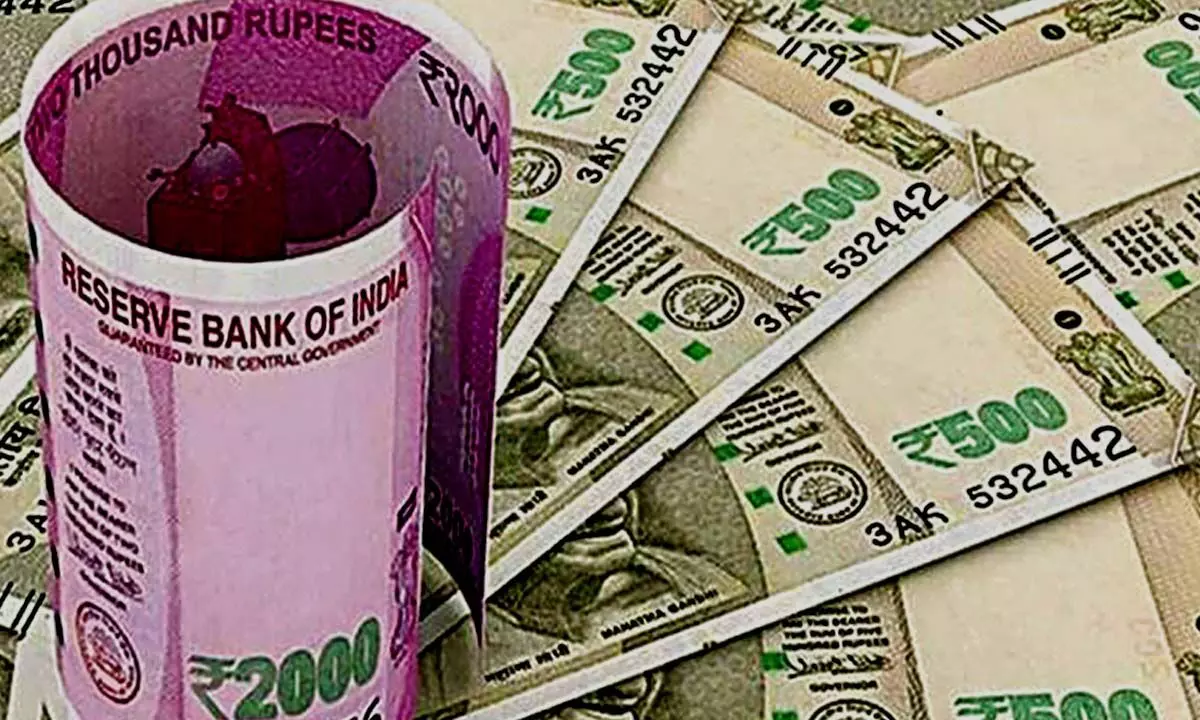Rise in credit growth bodes well for Indian economy
RBI should make conscious effort to internationalise the rupee, says SBI’s Chief Economic Advisor
image for illustrative purpose

An SBI study expects sectors such as infrastructure including power, renewable energy, petroleum, mining road, NBFCs, cement, aviation, electric vehicles, electronics, commercial real estate and food processing, will drive credit growth in coming quarters
Global economy continues to be characterised by significant volatility. On an average, energy, base metals, precious metals and agricultural prices are now down 25 per cent from 52 week highs as markets are anticipating a global slowdown turning into a full blown global recession. However, it is not clear whether such decline is the result of synchronized global rate actions or genuine fears of a recession looming large.
In India, such global developments could have a direct bearing on the inflation trajectory in the second half of the current fiscal. The RBI has been on course in normalising liquidity and net LAF is now close to the 1.5 per cent threshold non-inflationary level of liquidity.
However, the problem is unspent Government cash balances that have now jumped to Rs 3.1 trillion. This effectively implies that core liquidity is still at Rs 6.2 trillion as against Rs 8.3 trillion in the beginning of April. Additionally, RBI has also announced a slew of measures to augment capital inflows by making NRI deposits more attractive, say an internal economic research finding of SBI.
The cumulative impact of all these measures will be beneficial for the external sector given the fact that total NRI deposits exhibited an inflow of $3.2 billion in FY22 as against the inflows of $7.4 billion in FY21. The FCNR (B) swap scheme in 2013 was extremely successful helping raise around $34 billion of inflows, though the RBI had taken up the foreign exchange risk at that time to make the scheme successful.
SBI Group's Chief Economic Advisor Soumya Kanti Ghosh says, "The RBI should make conscious effort to internationalise the rupee. The Russia-Ukraine war and the disruptions to payments caused by it, is a good opportunity to insist on export settlement in rupee, beginning with some of the smaller export partners."
Coming back to credit growth, it expanded to Rs 2.6 lakh crore, far outstripping bank deposit growth at Rs 1.04 lakh crore in current year. The continued growth in bank credit is a matter of comfort and indicates that Indian economy is still navigating through the turmoil rather well. There are several aspects of this credit growth, he said.
First, the incremental credit to Micro, Small and Medium enterprises (MSMEs) since March 2020 has been on an upswing. Around 74 per cent of such is purely because of the credit guarantee scheme, and the remaining 26 per cent is because of other schemes, including the definitional change of the MSME sector. In terms of overall credit growth, the ECLG Scheme has contributed 15 per cent of the expansion.
Secondly, the analysis however shows that the utilisation of working capital by various sectors has been impacted adversely across sectors that are specifically linked to the geo-political tensions. These sectors include petroleum, power, engineering and also cement. The good thing is that some of the sectors like leather, food processing did not witness a material decline in working capital utilisation. Even sectors like pharmaceuticals and new age segments like healthcare did witness holding on to higher working capital utilisation limits.
Thirdly, banks continue to be judicious in term of credit disbursements. A decline in risk-weighted assets (RWA) continues, from around 65 per cent in June 2019 to below 58 per cent as on March, which indicates that banks are still careful about the risk profile of borrowers in an environment characterised by considerable uncertainty.
Fourthly and most importantly, the spread between AAA corporate bond and 10 year risk free G-sec rates have started moving upward since April, still it's significantly less than half of the average spread
at pre pandemic level i.e. in FY20. The average spread of an AAA 10-year paper was 117 bps in pre pandemic levels over similar tenor G-Sec., which is now only 36 bps. This indicates that risk pricing of corporate loans has not moved up in tandem. Market sources point out that some of the entities are not completely factoring the inherent credit risk in their pricing. For example, 5 year loans are being priced at even lower than 6 per cent, linking with repo / T-Bill rates. It is to be noted that 10-yr G Sec is currently trading at 7.3 per cent. Tenor premium apart, the practice may create a material risk with regards to sustainability of such rates and long-term effects of this practice on the ecosystem in a rising interest rate scenario.
The study expects sectors such as infrastructure including power, renewable energy, petroleum, mining road, NBFCs, cement, aviation, electric vehicles, electronics, commercial real estate and food
processing, will drive credit growth in coming quarters. RBI's recent measures on ECB/FPI inflows in debt segment are a welcome step in widening the market.

